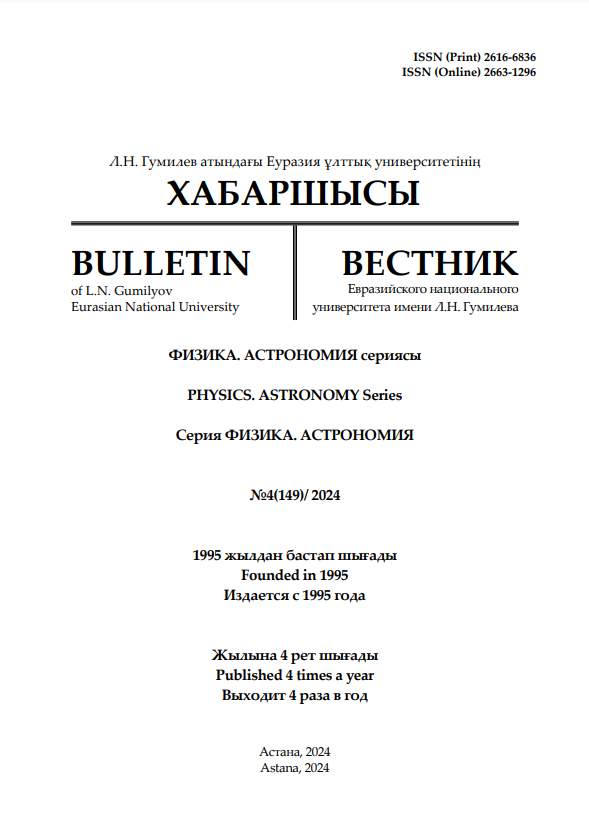HYBRID COMPOSITE MATRICES TO PREVENT RADIONUCLIDES FROM SPREADING INTO THE ENVIRONMENT
Views: 152 / PDF downloads: 85
DOI:
https://doi.org/10.32523/2616-6836-2024-149-4-115-127Keywords:
radionuclide, hybrid composite materials, sorbents, migration, liquid radioactive waste, mathematical modelling, swellingAbstract
The effective creation of hybrid composite materials (HCM) with significant sorption abilities for radionuclides in liquid radioactive waste has been discussed. These hybrid composite materials are made up of two sorbents, which are derived from an organic source and a natural mineral containing intercalated ferrocyanide complexes of transition metal ions. A substantial degree of radionuclide uptake is noted during the initial phase of sorption, which is linked to the plentiful active sites on the surfaces of the hybrid composition. In contrast, the subsequent stage of sorption shows diminished and slower radionuclide uptake, likely due to the gradual saturation of the remaining active sites within the HCM. Therefore, the rapid sorption can be associated with adsorption taking place on the outer surfaces of the materials, in contrast to the extended adsorption process observed in the macropores of the composite materials.
A thorough hydrodynamic-geochemical mathematical model was developed to represent the fixation and concentration mechanisms that clarify the movement of radionuclides through artificial geochemical barriers associated with liquid radioactive waste.










